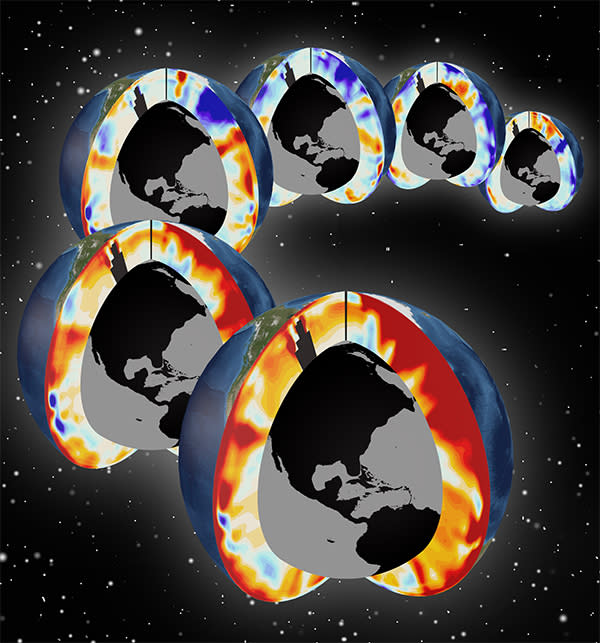January 18, 2016
 This image provided by Lawrence Livermore National Laboratory shows Pacific and Atlantic meridional sections showing upper-ocean warming for the past six decades (1955-2011). Red colors indicate a warming (positive) anomaly and blue colors indicate a cooling (negative) anomaly.
This image provided by Lawrence Livermore National Laboratory shows Pacific and Atlantic meridional sections showing upper-ocean warming for the past six decades (1955-2011). Red colors indicate a warming (positive) anomaly and blue colors indicate a cooling (negative) anomaly.
A new study published in the journal Nature Climate Change reports that the world’s oceans absorbed 150 zettajoules of energy in the 132 years between 1865 and 1997, and another 150 between 1997 and 2015 (18 years), proving that the rate accumulation of anthropogenic heat in the oceans is accelerating. To put this in perspective, 150 zettajoules of energy is equivalent to exploding a Hiroshima-size bomb every second nonstop for 75 years.
Most of the trapped heat is above 2,300 feet, but now deeper waters are also absorbing more energy. That means surface waters are unable to absorb as much anthropogenic-caused heat as before. Instead, it stays in the air and on land surface, with potentially serious consequences for life in the oceans, patterns of ocean circulation, storm tracks and storm intensity.